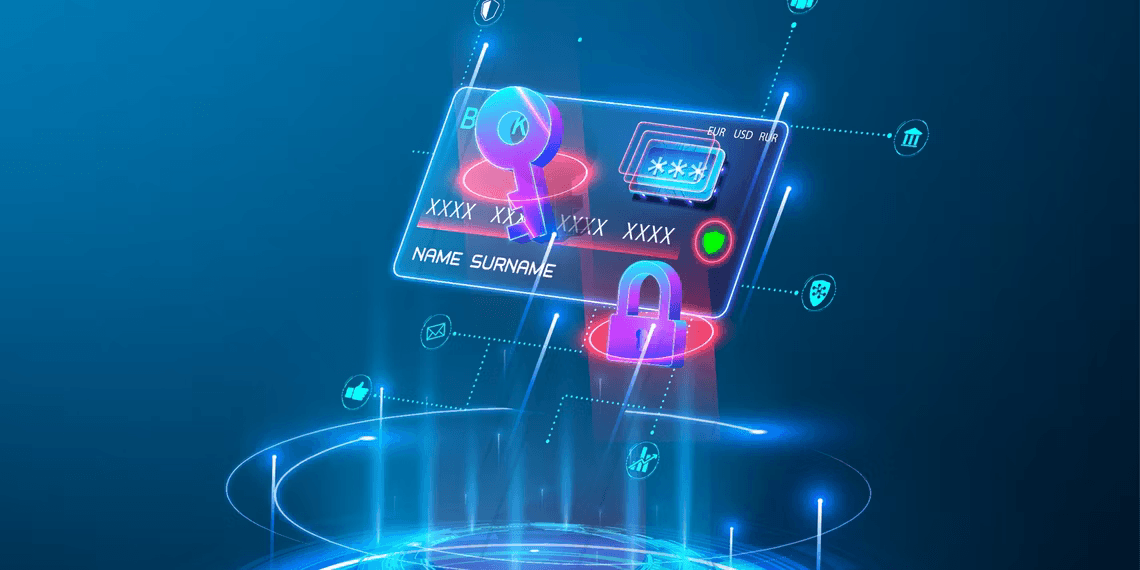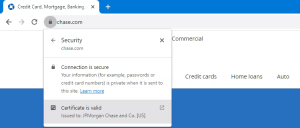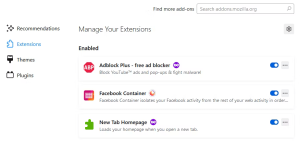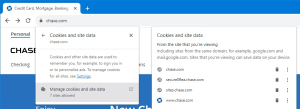Technology Explained
Can’t Log Into Online Banking? Troubleshooting Tips and Solutions

Can’t Log Into Online Banking? Try These Tips and Solutions
Online banking has revolutionized the way we manage our finances, providing convenient access to our accounts at any time. However, there are moments when even the most tech-savvy individuals find themselves locked out of their online bank accounts, facing frustrating login issues. If you’ve ever asked yourself, “Why can’t I log into my bank account?” this article is your comprehensive guide to troubleshooting and resolving these problems.
1. Ensure You’re Using the Correct Website
Protect Yourself from Phishing Scams
Online banking fraud is on the rise, and hackers often use phishing scams to compromise your account. To avoid falling victim to such scams, ensure that you are entering your username and password on the correct website. Double-check the website’s URL and look for the secure connection symbol (usually a lock) registered to your bank. Don’t solely rely on bookmarks; navigate directly to your bank’s homepage.

Image by https://www.makeuseof.com/
2. Check Your Bank’s Service Status
Is It a Bank-Side Issue?
Before diving into troubleshooting, it’s essential to verify whether the problem lies with your bank. Search for your bank’s service status page using the query “[bank name] service status” (ensuring you’re on the official website). Alternatively, check the bank’s official social media pages for updates. If all else fails, platforms like Downdetector can help identify widespread issues.
3. Check Your Credentials
The Devil Is in the Details
Sometimes, the login issue is as simple as a typo in your credentials. Ensure that you’re using the correct username and password, paying attention to capitalization and special characters. If in doubt, consider resetting your credentials to confirm that you’re using the right ones.
4. Update Your Browser
Stay Current for Security
Outdated browsers can lead to login problems. Keep your web browser up-to-date to benefit from the latest security features and compatibility fixes. Here’s how to manually check for updates on popular browsers:
- Chrome: Input chrome://settings/help in the address bar.
- Edge: Input edge://settings/help in the address bar.
- Firefox: Go to Menu > Help > About Firefox.
Alternatively, download the latest version from the browser’s official website.

Image by https://www.makeuseof.com/
5. Disable Your Browser’s Extensions
Extension Interference
Browser extensions, like ad/tracker blockers and password managers, can interfere with the bank’s login process. Disable your extensions and enable them one at a time to identify the culprit. Ensure that each extension is up-to-date or keep it disabled until it’s patched.

Image by https://www.makeuseof.com/
6. Disable Your VPN
Bypass VPN for Banking
While VPNs offer privacy, some banks may deny access if a VPN is active. Temporarily disable your VPN when logging in to resolve online banking issues. Banks need to verify your location for security, and a VPN can raise red flags.
7. Check Your Tracking Protection Settings
Fine-Tune Tracking Protection
Your browser or antivirus software might have overly strict tracking protection settings. For example, Firefox’s Enhanced Tracking Protection can hinder certain activities. Access it by inputting about:preferences#privacy in the address bar. Try the Standard setting, which balances protection with functionality.
Image by https://www.makeuseof.com/
8. Try Incognito or Private Mode
Testing with a Clean Slate
Incognito or private browsing mode provides a fresh start without cached data or cookies. Press Ctrl + Shift + N (Chrome/Edge) or Ctrl + Shift + P (Firefox) to open these modes. If login works in incognito mode, proceed to clear your cookies in the regular browser.

Image by https://www.makeuseof.com/
9. Clear Your Bank’s Cookies
Targeted Cookie Cleanup
Outdated cookies can trigger login issues. Rather than deleting all your cookies, clear them specifically for your bank’s website.

Image by https://www.makeuseof.com/
10. Try a Different Browser
Browsers Aren’t Created Equal
Switch to a different browser to test if the issue persists. Outdated browsers like Internet Explorer may not be supported by your bank. Reliable browsers like Chrome, Edge, or Firefox are recommended alternatives.
Still Can’t Log In? Contact Your Bank
After diligently following these steps, if you still can’t log into your online bank account, it may be a bank-side issue. Contact your bank’s customer support, explain the problem, and follow their guidance to resolve the issue.
Stay vigilant when banking online to protect your financial assets. Cybercriminals are always looking for opportunities to access your accounts. Keep your personal information secure and follow these steps to ensure a smooth online banking experience.
Table: Troubleshooting Steps
| Step | Description |
|---|---|
| 1 | Confirm you’re on the correct website, beware of phishing scams. |
| 2 | Check your bank’s service status to rule out bank-side issues. |
| 3 | Verify your credentials, avoid typos. |
| 4 | Keep your browser updated for security. |
| 5 | Disable browser extensions that may interfere with login. |
| 6 | Temporarily disable your VPN while logging in. |
| 7 | Adjust tracking protection settings in your browser or antivirus. |
| 8 | Test login in incognito/private mode to identify cache or cookie issues. |
| 9 | Clear cookies specifically for your bank’s website. |
| 10 | Try a different browser, such as Chrome, Edge, or Firefox. |
Remember to follow these steps in sequence, and if the issue persists, contact your bank’s support for assistance.
Business
PL-300 Microsoft Power BI Data Analyst Exam Guide ExamKill

Introduction
The Microsoft PL-300: Power BI Data Analyst exam is one of the most popular certifications for professionals who want to work with business data. This certification helps you prove your ability to prepare model visualize and analyze data using Microsoft Power BI. In this guide we will cover everything about the PL-300 exam in simple words so you can prepare easily and pass it with confidence.
Click the the link to get latest updates PDF Questions answers material: https://examkill.com/product/pl-300/
What is the Microsoft PL-300 Exam?
The PL-300 exam checks your skills in using Power BI to make data driven decisions. It is an official certification from Microsoft designed for data analysts who want to build dashboards reports and insights using Power BI tools. After passing this exam you earn the Microsoft Certified: Power BI Data Analyst Associate credential. It is a valuable certification in today’s data driven world and can help you grow your career.
Why Earn the PL-300 Certification?
Getting the PL-300 certification proves that you can turn raw data into useful insights. It helps you stand out in job interviews and gives you recognition from employers around the world.
Here are some top reasons to earn this certification:
- It shows your strong understanding of Power BI.
- It helps you qualify for data analyst BI analyst and reporting jobs.
- It increases your salary potential.
- It keeps your resume updated with the latest Microsoft skills.
- You gain confidence in working with data visualization and dashboards.
When you pass the PL-300 exam you become part of the Microsoft Certified community which is respected worldwide.
Skills Measured in the PL-300 Exam
The exam tests your ability in the following key areas:
1. Prepare the data (20-25%)
- Get data from different sources
- Clean and transform data
- Load data into Power BI
2. Model the data (25-30%)
- Design data models
- Use DAX for calculations
- Optimize model performance
3. Visualize and analyze the data (20-25%)
- Create dashboards and reports
- Apply filters and slicers
- Identify patterns and insights
4. Deploy and maintain assets (15-20%)
- Manage datasets and workspaces
- Set up security and permissions
- Update and share content
If you study these topics carefully you will be ready for the exam.
Who Should Take the PL-300 Exam?
This exam is perfect for anyone who works with business data and wants to use Power BI for reporting and analytics. You can take this exam if you are:
- A Data Analyst
- A Business Intelligence Developer
- A Reporting Analyst
- A Data Professional
Even if you are new to data analytics this certification is a great way to start.
How to Prepare for the PL-300 Exam
Preparation is the key to success. Here are a few simple steps to get ready for your PL-300 exam:
- Understand the exam topics: Read Microsoft’s official exam outline to know what is covered.
- Get practical experience: Work with Power BI regularly. Try to clean model and visualize your own data.
- Use trusted study material: Download updated PL-300 practice questions and dumps from ExamKill.
- Watch tutorial videos: There are many free Power BI videos available online. Watching them helps you learn faster.
- Practice test questions: Use ExamKill’s real PL-300 exam questions to test your knowledge before the exam day.
Why Choose ExamKill for PL-300 Preparation
ExamKill is one of the most trusted websites for Microsoft exam preparation. It provides real and updated PL-300 practice questions designed by experts.
Here’s why students prefer ExamKill:
- 100% Exam Coverage: All questions are based on real exam topics.
- Regular Updates: Free updates for 90 days to keep your content fresh.
- 30 Days Money Back Guarantee: If you fail the exam you can get your money back within 30 days.
- Easy to Use: You can download the material instantly after purchase.
- Web Based and Desktop Versions: Practice anytime on your laptop or phone.
When you use ExamKill’s PL-300 study materials you can prepare confidently and pass on your first try.
Sample PL-300 Exam Questions
Here are a few example questions to understand the exam style:
Question 1: You need to combine data from multiple Excel sheets into one Power BI model. Which feature should you use?
Answer: Use Power Query to append or merge queries.
Question 2: What is the purpose of DAX in Power BI?
Answer: DAX is used to create calculated columns measures and tables.
Question 3: You want to share a dashboard securely with your team. What should you configure?
Answer: Configure workspace access permissions.
Question 4: How can you improve Power BI report performance?
Answer: Optimize data models and reduce the size of datasets.
Final Tips to Pass the PL-300 Exam
- Review every topic from the official exam outline.
- Practice with real datasets.
- Take mock tests from ExamKill to check your preparation.
- Revise DAX functions and Power BI service concepts.
- Stay calm and manage time wisely during the exam.
The PL-300 Microsoft Power BI Data Analyst certification is your path to a successful data career. It proves your ability to use Power BI for business analysis and decision making. To prepare effectively use reliable and updated study materials from ExamKill. With their 90 Days Free Updates and 30 Days Money Back Guarantee you can prepare without any risk.
Start your journey today and become a certified Microsoft Power BI Data Analyst.
Click the the link to get latest updates PDF Questions answers material:
Business
Top Mistakes to Avoid in Grocery App Development

Introduction
The idea of launching a grocery delivery application in 2025 is a thrilling project, but the road to success is filled with the possibility of pitfalls. The online shelves are crowded and expectations of customers are at the highest level ever. An error in execution or planning could cause a shaky launch, inefficient investment and a bad reputation for your brand. That’s why careful and strategic planning is essential. A partnership with a knowledgeable grocery Delivery App Development Company from the beginning will assist you in navigating these issues and develop a product customers will enjoy and use often.
Common Mistakes Businesses Make When Developing Grocery Apps
The process of creating a successful application is more than having an idea. It’s about avoiding common mistakes that have led others to fail. These are the most common mistakes that we see companies make.
- Skipping Proper Market Research: Many entrepreneurs rush into development, thinking they have a good idea of what their customers want. This is a major mistake. In the absence of understanding your intended customers, local competitors and the unique needs of your market creating an app using guesswork. You could create features that no one is looking for or miss a crucial chance to make your app stand out.
- Choosing the Wrong Development Partner: The decision to choose a development firm that is based on the cheapest price can lead to failure. Inexperienced or unqualified partners frequently produce faulty code, a poor design, or an unscalable product. Savings initially are soon lost due to the cost of fixing errors and building functions later on.
- Ignoring UI/UX Design Principles: If your application is slow, confusing or hard to use, users will remove it. Poor design of the user interface (UI) or user interface (UX) are among the primary factors in the abandonment of apps. This can be anything from a messy layout to complicated icons to a lengthy and confusing registration procedure.
- Lack of Scalability and Performance Planning: Your app may work flawlessly with just 100 users But what happens when you’ve got 10,000 users? Lack of planning for scaling results in the app failing to function or slow down or even fail at times of high demand. This is not just a source of frustration for users, but it can also slow your business to a standstill.
- Overcomplicating the Checkout Process: The objective is to make purchasing as simple as is possible. Many applications make the error that they have too many processes, requiring more details, or not providing sufficient payment options. Each additional click during the checkout process gives another opportunity for the user to drop their shopping cart.
- Neglecting Delivery Logistics and Real-Time Tracking: The app is just one element of the equation. Inability to plan delivery logistics, including routing improvement, management of drivers and tracking orders–will sabotage the experience for customers. Customers are expected to know where their order is, and when it will be delivered.
- Weak Marketing and Customer Engagement Strategies: The process of creating a successful application is only half of the task; you need to convince users to download and use it. The absence of a marketing plan prior to or during and after launch is a common error which leads to low download rates and low customer retention.
Tips to Avoid Making These Mistakes? practical strategies
To avoid these mistakes, it comes down to good planning and strategic collaborations.
- Conduct a thorough User research: Before writing even a single page of code you must talk to prospective customers. Utilize surveys, interviews as well as focus group discussions to discover their needs and wants. This information can be used to establish the essential features of your app.
- Partners with a seasoned Grocery App Development company: Look for an experienced team with a demonstrated experience in the development of on-demand delivery applications. An experienced partner such as a reputable grocery delivery Mobile App Development Company can guide you through the entire process from the beginning to the launch stage and beyond.
- prioritizing Mobile Security and Performance: Make sure you have an easy, clean UX/UI design. Your app should be quick responsive, secure, and reliable. An easy experience helps build trust and promotes repeat business.
- Utilize Analysis and Feedback from Customers: Once your application is up and running, you can use analytics tools to analyze the user’s behavior. Get feedback from your customers via surveys and reviews and use the insights to continuously improve your product and changes.
- Integration of Social Media to Increase Visibility: Utilize social media to create an online community for your business. Features such as social logins make the process of signing up, and referral programs can transform users to brand ambassadors.
The Role of Mobile and Social Media Integrations in App Success
An integrated approach is crucial. A comprehensive approach is essential. Mobile App Development Services do not just concentrate on the app but also how it is connected to the larger digital ecosystem. Collaboration with a seasoned Social Media App Development Company will allow you to incorporate features that boost the acquisition of customers and engagement. Social logins, in-app sharing as well as integrated reviews systems create social proof, and help make your app more noticeable.
Why Developer Bazaar Technologies Is the Right Partner
We are Developer Bazaar Technologies, we don’t just create apps. We also create businesses. As a reputable Grocery App Development Company We focus on helping our customers to avoid costly mistakes. We offer end-to-end grocery delivery App Development Services beginning with thorough research into the market and a strategic plan.
Our experience in customized grocery delivery apps will ensure you that the application is built with a robust basis, with an easy-to-use design, and has the reliable logistics tools that are essential to ensure an efficient operation. We assist you with every process, making sure your app is built to be successful long-term right from the start.
Conclusion
Making a grocery delivery app is an arduous but rewarding experience. If you are aware of the most frequent mistakes and taking steps to avoid them you can lay a solid base for a profitable, profitable enterprise. The most important thing is to put the highest priority on your client’s investment in high-quality development and consider strategically each aspect of the experience, starting from the very first tap until the last delivery.
Business
FMCSA-CME Certification Guide Pass the NRCME Exam with Confidence

Introduction
If you are a medical professional who wants to play a key role in road safety and public health then the FMCSA-CME Certification is the right choice for you. This certification allows you to perform Department of Transportation (DOT) physical examinations for commercial drivers. It proves that you understand the Federal Motor Carrier Safety Administration (FMCSA) medical standards and can make correct fitness decisions for drivers. In this complete guide we’ll discuss what the exam is why it’s important who can apply and how ExamKill helps you prepare quickly and confidently.
Click the the link to get latest updates PDF Questions answers material: https://examkill.com/product/fmcsa-cme/
What is the FMCSA-CME Certification?
The FMCSA-CME exam officially called the National Registry Certified Medical Examiner (NRCME) Certification is required for medical professionals who want to be listed on the National Registry of Certified Medical Examiners. It ensures that all medical examiners understand the medical guidelines for commercial motor vehicle (CMV) drivers. Passing this exam confirms that you can correctly determine if a driver is medically fit to operate a vehicle safely. The FMCSA-CME certification process was created to improve highway safety and ensure all drivers meet strict health standards before driving heavy commercial vehicles.
Why Earn the FMCSA-CME Certification?
Getting the FMCSA-CME Certification benefits both your career and the community. Here are some strong reasons to pursue it:
- Professional Recognition: You become part of a qualified group of certified examiners recognized by FMCSA.
- Career Growth: Many clinics and healthcare providers need certified examiners for DOT physicals.
- Public Safety Contribution: You help ensure that commercial drivers meet national medical standards.
- Expanded Knowledge: You’ll learn deeply about FMCSA health regulations and driver wellness.
- Better Opportunities: It can increase your service value and attract more patients to your clinic.
So, if you want to add a respected qualification to your profile this certification is a smart and valuable investment.
Who Can Take the FMCSA-CME Exam?
Not everyone can take this exam. The FMCSA-CME certification is only available for licensed healthcare professionals such as:
- Medical Doctors (MDs)
- Doctors of Osteopathy (DOs)
- Physician Assistants (PAs)
- Advanced Practice Nurses (APNs/NPs)
- Doctors of Chiropractic (DCs)
You must have an active medical license in the U.S. and complete FMCSA approved training before you can register for the NRCME exam.
FMCSA-CME Exam Overview
Here’s a short summary of what you should know about the exam:
- Vendor: Government (FMCSA)
- Exam Name: National Registry Certified Medical Examiner (NRCME)
- Format: Multiple choice questions (computer based)
- Number of Questions: Around 120
- Passing Score: Determined by FMCSA standards
- Duration: Approximately 2 hours
- Topics Covered:
- FMCSA physical qualification standards
- Driver medical history and documentation
- Determining driver fitness for duty
- Use of medical forms and procedures
- Reporting and certification process
The exam tests your ability to apply FMCSA medical guidelines in real world cases.
How to Prepare for the FMCSA-CME Exam
Preparing for the FMCSA-CME requires clear study materials realistic practice questions and regular self testing. You can prepare easily using updated study material from ExamKill. It provides high quality real exam based questions that help you understand the format and content deeply.
What You Get at ExamKill:
- Comprehensive question sets covering all FMCSA topics
- Printable PDF format for flexible study
- Instant download after purchase
- 90 days of free updates for exam changes
- 30 day money back guarantee if you’re not satisfied
With ExamKill you don’t waste time searching for reliable material everything you need is in one place.
Exam Topics You Should Focus On
When studying for the FMCSA-CME exam give attention to these major topics:
- Driver Physical Qualification Standard: Understand all the medical conditions that can affect a driver’s ability.
- Medical History Evaluation: Know how to collect and assess driver health data.
- Vision and Hearing Requirements: Learn the minimum requirements set by FMCSA.
- Cardiovascular and Respiratory Conditions: Understand how these affect driving ability.
- Medication and Substance Use: Be familiar with FMCSA rules about prescription drugs.
- Certification Process and Documentation: Practice completing medical forms correctly.
Reviewing these areas in detail will make your preparation stronger and improve your passing chances.
Why Choose ExamKill for FMCSA-CME Preparation
ExamKill has been helping certification candidates for years. It provides accurate verified and easy to understand materials that make your preparation stress free.
Here’s why thousands of learners prefer ExamKill:
- Real Exam Experience: Practice with authentic FMCSA-CME style questions.
- 30 Days Money Back Guarantee: If you’re not satisfied get a full refund no questions asked.
- 90 Days Free Updates: Stay current with any FMCSA regulation changes.
- User Friendly Material: Simple layout clear answers and quick downloads.
- Proven Success Rate: Many medical professionals passed their FMCSA-CME with ExamKill resources.
You’ll get everything you need to pass confidently without wasting time or effort.
Helpful Tips for FMCSA-CME Exam Success
Here are some practical and easy to follow tips:
- Create a Study Plan: Divide topics by week and stick to a routine.
- Review FMCSA Rules: Understand all driver qualification standards.
- Use Practice Questions: Test your knowledge regularly.
- Stay Updated: Check for changes on the FMCSA website.
- Be Confident: A calm and prepared mind performs better.
Remember success comes from consistent effort and smart preparation.
The FMCSA-CME (NRCME) Certification is your gateway to becoming a qualified Certified Medical Examiner in the U.S. It not only helps your professional growth but also plays a vital part in keeping highways safe. If you’re ready to take the next step prepare using trusted and updated materials from ExamKill. You’ll get instant access 30 days money back guarantee and 90 days of free updates giving you total peace of mind.
Start today and move closer to your goal of becoming a nationally recognized medical examiner!
Sample FMCSA-CME Practice Questions
Question 1: What is the maximum certification period for a driver who meets all FMCSA medical standards?
A) 6 months
B) 1 year
C) 2 years
D) 3 years
Answer: C) 2 years
Question 2: A driver with uncontrolled diabetes mellitus should be:
A) Certified for 1 year
B) Temporarily disqualified
C) Referred for vision testing
D) Automatically approved
Answer: B) Temporarily disqualified
Question 3: Which FMCSA form must be completed for each driver physical?
A) MCSA-5875
B) MCSA-5000
C) DOT-Form-99
D) NRCME-102
Answer: A) MCSA-5875
Using real style questions like these helps you get familiar with the test structure and time management.
Click the the link to get latest updates PDF Questions answers material:
-
Business2 years ago
Cybersecurity Consulting Company SequelNet Provides Critical IT Support Services to Medical Billing Firm, Medical Optimum
-
Business2 years ago
Team Communication Software Transforms Operations at Finance Innovate
-
Business2 years ago
Project Management Tool Transforms Long Island Business
-
Business2 years ago
How Alleviate Poverty Utilized IPPBX’s All-in-One Solution to Transform Lives in New York City
-
health2 years ago
Breast Cancer: The Imperative Role of Mammograms in Screening and Early Detection
-
Sports2 years ago
Unstoppable Collaboration: D.C.’s Citi Open and Silicon Valley Classic Unite to Propel Women’s Tennis to New Heights
-
Art /Entertainment3 years ago
Embracing Renewal: Sizdabedar Celebrations Unite Iranians in New York’s Eisenhower Park
-
Finance3 years ago
The Benefits of Starting a Side Hustle for Financial Freedom































